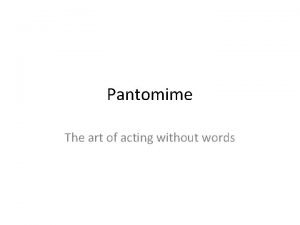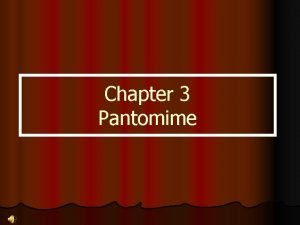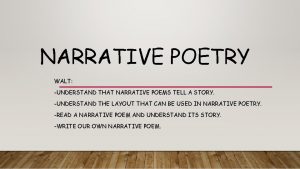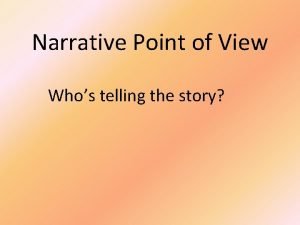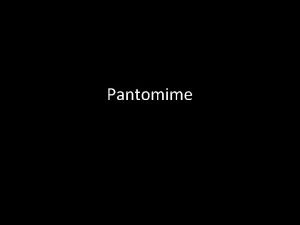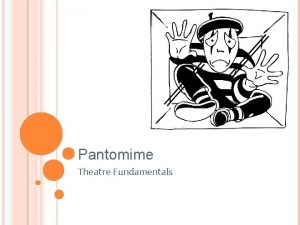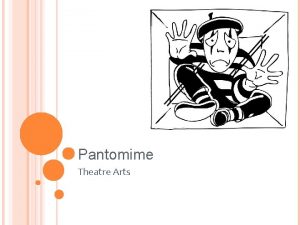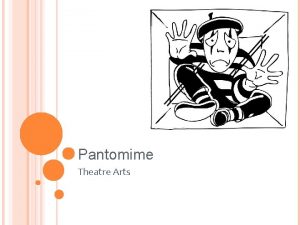PANTOMIME Telling a story without words WHAT IS








- Slides: 8

PANTOMIME Telling a story without words

WHAT IS PANTOMIME? pan·to·mime ˈpantəˌmīm/ noun 1. a dramatic entertainment, originating in Roman mime, in which performers express meaning through gestures accompanied by music. 2. BRIT. a theatrical entertainment, mainly for children, that involves music, topical jokes, and slapstick comedy and is based on a fairy tale or nursery story, usually produced around Christmas. verb 1. express or represent (something) by extravagant and exaggerated mime.

YOU DON’T HAVE THIS LOOK LIKE THIS…

WHY LEARN ABOUT MIMING…? • There are many times in acting where a prop is not physically there (often in your favourite thing… IMPROV!) • It’s a key skill to be able to establish locations and objects using mime • Body language • Become comfortable with your body and the way it moves • Building confidence before adding speaking

MIMING VIDEOS Using a door Lifting The Art of Mime

TIPS! 1. When working with pretend/mimed objects, always give it space and weight. Even the smallest objects take up space and have weight. 2. Believable actions: Start being conscious of your real daily actions. Think about how you move when you open doors, brush your teeth, unlock your locker, pack your purse or backpack, use your phone…For it to be believable, it must be pantomimed the way you really do it. 3. (almost) Always face the audience! People want to see your face and body language. Always check your blocking to ensure it is the best set-up for your audience to see you as much as possible. 4. Start out simply! Practice with every day situations before

ACTIVITIES • What are you doing? (circle) • Follow the Leader (circle) • Mirror partner work • Lead with your… (developing character and character walks) • Broken Action Telephone in teams • A Day in the Life

TUG-O-WAR! Let’s watch this video on pulling a rope! http: //www. youtube. com/watch? v=PO 2 -2 y-Gh. R 8 Then we’ll have our own Tug-o-War!

